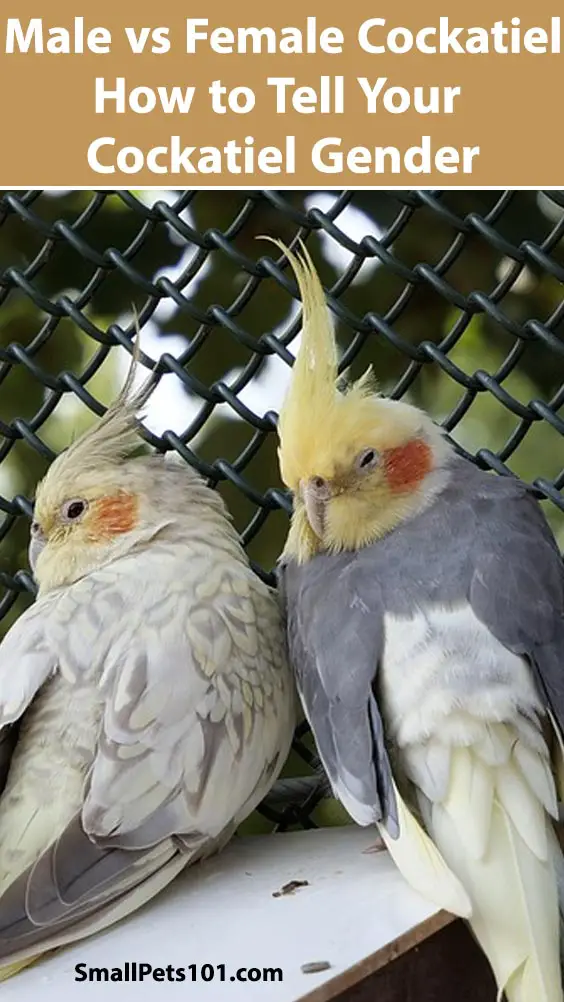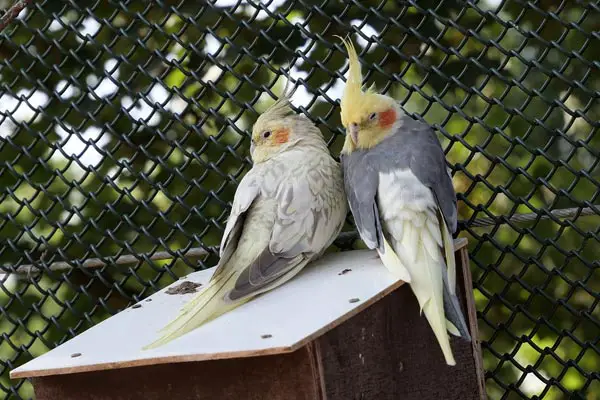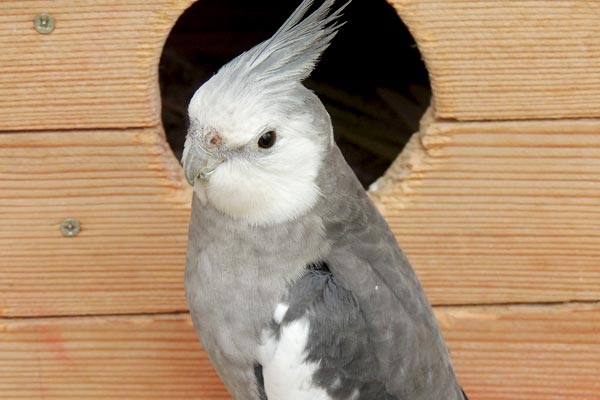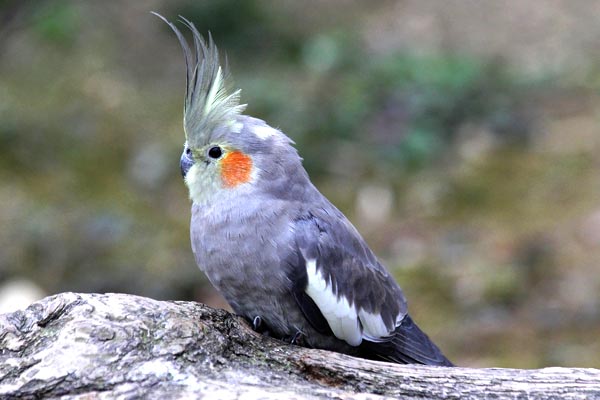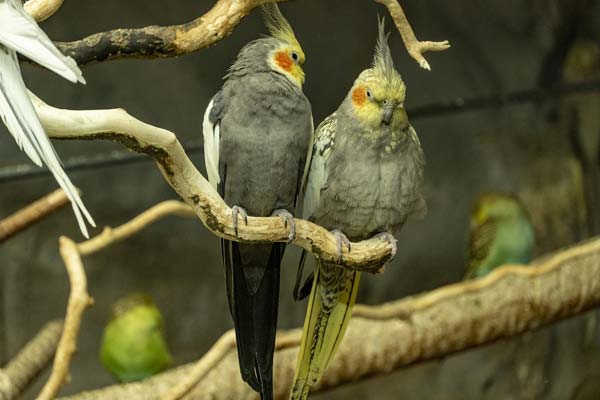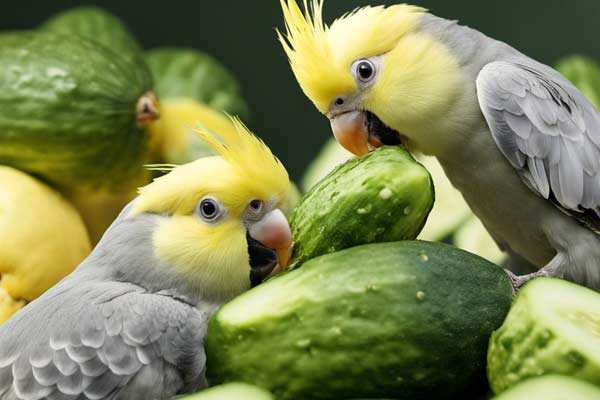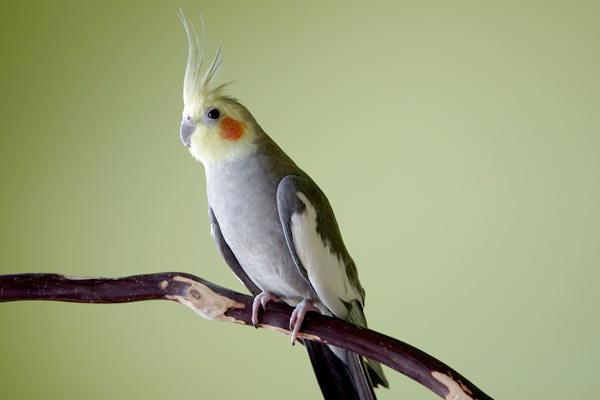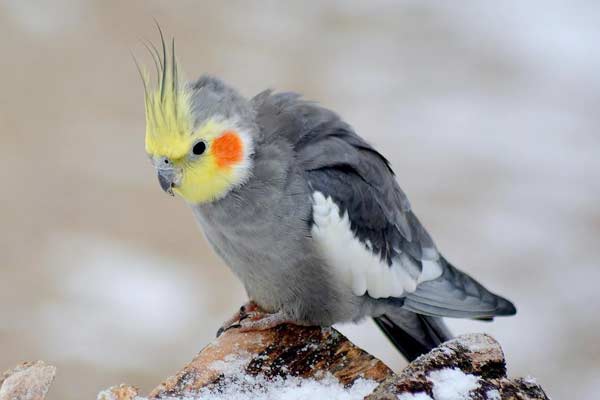Male vs Female Cockatiel: How to Tell Your Cockatiel Gender
Cockatiels are the second most popular species of companion parrot in the world today.
Many owners want to know how to tell if their new pet bird is a boy or a girl. Some prospective cockatiel owners also want to know how to pick out a male or female cockatiel when they go to choose their bird.
This is a little trickier than it sounds! In this article, you will learn why it is not always so easy to figure out if a cockatiel is male or female and the different factors that make it easier or harder.
You will also learn one guaranteed way to tell the gender of your cockatiel.
Male vs Female Cockatiel
The only guaranteed method for determining a male vs female cockatiel is DNA testing. DNA testing is mildly invasive to the bird so should be used as a last resort only.
There are gentler methods to distinguish between a male and female cockatiel. However, these involve learning more about cockatiel genetics and color mutations as well as behavioral differences between male and female birds.
We will discuss each of these methods for distinguishing between male vs female cockatiels in the rest of this article.
Learn More About Gender Determination for Cockatiels
In this YouTube video, an experienced cockatiel owner explains some options to know for sure whether you have a boy cockatiel or a girl cockatiel.
You will also learn more about how the process of growing up can cause a boy cockatiel to appear to be a girl cockatiel and vice versa.
When Do Cockatiels Mature
As Tailfeathers explains, cockatiels can mature, or reach sexual maturity and breeding age, anywhere from six to nine months of age.
Why is this important for telling male and female cockatiels apart?
It is important for two reasons: color changes and behavioral changes. Let’s take a look at each of these cockatiel gender distinctions now.
Cockatiel color changes at maturity
For most cockatiel color mutations, the young or juvenile cockatiels will look fairly identical to each other regardless of gender.
But as Feisty Feathers points out, near the time the birds attain sexual maturation and reach breeding age, they also go through their first big feather molt.
This feather molt will usher in color changes that distinguish female birds from male birds. Not surprisingly, these gender-specific color changes are important because they will aid in mate selection.
Even if you do not plan to breed your personal pet cockatiel, you will still need to wait until your bird reaches breeding age to be able to see any gender-specific changes in feather color.
Cockatiel behavioral changes at maturity
Young cockatiels (age six months or younger) are fairly consumed with the arduous process of growing up.
Young birds are feeding furiously while getting bigger and stronger and growing in their first full set of feathers. Then they are figuring out what their wings are for and learning to navigate the intricacies of flight.
When juvenile birds reach breeding age, experienced owners and cockatiel breeders can often tell male and female birds apart by their behavior and body language.
This is not a foolproof strategy but it can be a helpful aid to gender confirmation when combined with other tools.
So now let’s take a look at the differences in mature cockatiel behavior between male cockatiels and female cockatiels.
Male cockatiel behavior
Cockatiel Cottage explains that body language and vocalizations are key methods experienced owners and breeders often employ to pick out male cockatiels.
Male birds of any species tend to be the more vocal and social as this aids in attracting a mate.
Male cockatiels are more likely to vocalize a lot, whistling, calling and chirping, tapping their beaks against hard surfaces, and making other noises to advertise their interest in finding a mate.
Male cockatiels will also tend to be more responsive to shiny items, singing and whistling to their reflections, making “heart-shaped wings” by holding their wings out from their body and rubbing their vent area (beneath the tail) when they are hormonal.
Female cockatiel behavior
Female cockatiels tend to be less vocal and social than mature male cockatiels when they are ready to breed. Female birds are less likely to be reactive to shiny items and to sing or whistle excessively when they are ready to mate.
A female cockatiel may be more likely to dip her head and body down and lift her tail area to indicate readiness to mate even if there is no male bird.
However, it is unfair to generalize about male vs female cockatiel behavior outside of the seasonal changes that can trigger hormonal mating behaviors.
A caring owner who spends a lot of time with a female cockatiel may find their bird is just as likely to whistle and sing a lot and be very outgoing and lively like the stereotypical male cockatiel.
Monomorphic Vs Dimorphic Cockatiels
These two terms are a mouthful, but their meanings are pretty simple.
Monomorphic means male and female birds look identical when they mature. Dimorphic means male cockatiels look different than female cockatiels when they mature.
As KM Breeding explains, in a wild setting, cockatiels are typically a normal grey color mutation, which is a dimorphic color mutation.
For that reason, a wild adult male cockatiel will have a different coloring from a wild adult female cockatiel.
But captive breeders have used modern knowledge of avian genetics to breed cockatiels in many other color mutations that are not found in the wild.
Some of these human-made cockatiel color mutations are monomorphic, which means adult birds do not change colors based on their gender.
This makes cockatiel gender particularly challenging to figure out because not all of these color mutations become dimorphic when the bird reaches maturity.
In some color mutations, male and female adult birds continue to look exactly alike.
Three general examples of color mutations where mature adult male and female cockatiels will still look identical include lutino, albino and pied.
When your cockatiel has one of these three color mutations, how can you tell whether you have a female or male cockatiel?
There are two other ways you can figure out the mystery: by studying your bird’s behavior around breeding time or by having a DNA test.
As we have already mentioned in an earlier section here, behavioral gender typing is not always accurate. However, it is more likely to be accurate when the daylight hours are lengthening and the temperatures are warming.
These seasonal changes are more likely to trigger the typical gender-specific hormonal behaviors associated with breeding, even if your cockatiel is an “only bird” and you don’t have any plans to breed babies.
We will talk about DNA testing next.
One Reliable Way to Tell Your Cockatiel Gender
There is only one reliable way to know for sure if you have a male cockatiel or a female cockatiel.
That way is to order a DNA test for your bird.
As Veterinary World highlights, veterinary science can perform genetic testing to verify whether a bird is male or female.
However, be aware that there is a cost associated with DNA testing.
DNA testing also requires that you gather a DNA sample from your bird which can be stressful and painful.
Bird DNA Testing explains that there are two ways to gather the necessary DNA sample from your cockatiel.
Draw blood by cutting your bird’s nail
The first way to gather a DNA sample from your cockatiel is to clip a nail too close to the quick and draw blood.
If you opt for this method, make sure you have sterile gauze or cotton swabs and styptic powder on hand to stop the bleeding right away.
Cockatiels are very small birds and even a small amount of blood loss can impact them quickly. If you do not feel confident clipping your bird’s nails yourself, your avian veterinarian can assist with collecting the DNA sample.
Pluck out some of your cockatiel’s breast feathers
An alternate method of gathering DNA material from your cockatiel is to pluck out several of your bird’s breast feathers.
This will extract a tiny clot of blood at the end of the feathers which can be used for DNA testing.
For a cockatiel, most DNA tests require at least five breast feathers to complete the testing.
Be aware it is very easy to injure a small, fragile bird like a cockatiel while trying to pluck out its feathers. It is best to have an additional person assist with the actual feather collection or ask your avian veterinarian to do this for you.
Once you have submitted the DNA sample of your choice, you should know within a week or so whether you have a male or a female cockatiel.
DNA testing can also be helpful when choosing a cockatiel companion for your bird.
